PORTFOLIO
Ed Love
Department of Finance and Marketing

Leveraging Student Engagement to Boost Critical Thinking: Surprising Lessons from the Field of Marketing
As an instructor, I believe in the element of surprise. My overarching goal is to connect my students with course content in a lasting way. This is best achieved through pedagogical strategies that increase critical thinking about and engagement with that content. Hence, surprise. Surprise helps my students to consider concepts in new ways.
"Surprise helps my students to consider concepts in new ways."
Surprise is fun, but it is only one of many tools for enhancing critical thinking and engagement. Personal connection also has a tremendous impact. I link course content to their lives by seeking points of relevance in current events, industry practice, and (best of all) personal interest1. There is also an improvisational element to my courses; I know my lesson plans well enough that I can comfortably depart from them. When I am at my best, the learning process feels like a free flowing discussion.

Since my syllabi are not written to highlight the innovative quality of my courses, I offer the following brief descriptions from three of my courses.
MKTG 381: Fundamentals of Marketing Research
I begin this course with an introductory survey that students are required to take during the first week of class2. Along with some demographic questions, I include measures of familiarity with and interest in course content. I also ask them to choose between the superpowers of flight and invisibility.

I refer back to this survey on several occasions during the quarter. When we reach the topic of hypothesis testing, for example, students are asked to create a formal hypothesis related to the preference for one superpower over another. There is always a fruitful and engaging in-class discussion regarding the theoretical basis for these hypotheses.
Later in the quarter, when we discuss survey design, I use the survey to illustrate specific question types. I also ask the students to identify key problems with the survey as I have constructed it (I build some errors in on purpose) and ask them to suggest improvements. I analyze their response data to illustrate specific analytical methods such as z-tests, t-tests, chi-squared tests, and correlations. I find that, because the data describe the students themselves, the students find the analysis particularly engaging.
"...students are asked to create a formal hypothesis related to the preference for one superpower over another. There is always a fruitful and engaging in-class discussion regarding the theoretical basis for these hypotheses."
With the help of Pete Stelling, a petrologist in the WWU Department of Geology3, I developed another activity where students create volcanoes using Mentos candy and two-liter bottles of soft drink. The effervescent reaction that occurs when a Mentos candy is placed in a carbonated beverage has become a staple demonstration in earth science courses to explain how volcanoes erupt. It is also a highly engaging, experiential means of illustrating the principles of causal research and experimental design, topics which some marketing students have trouble grasping in the abstract. Tables 1 & 2 illustrate how this exercise is reframed to illustrate the concepts related to experimental design.
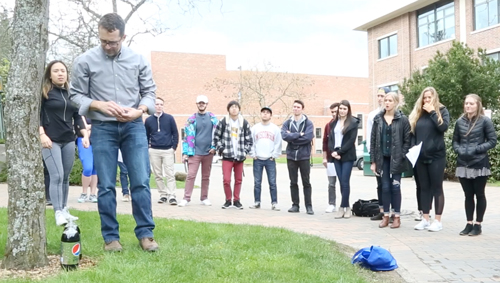
Table 1. List of questions used to guide experimental design.
| Experimental Design Question | Student Rephrasing of Question | Common Student Responses for the Mentos Experiment |
|---|---|---|
| 1. What is the goal of the experiment? | What statement are you trying to prove or determine? What question are you trying to answer? | Which combination of parameters will produce the best soda eruption? |
| 2. How will you measure the success of your experiment? | What makes one eruption better than another? | Soda fountain height, soda fountain duration, volume of soda removed from bottle |
| 3. What are the influencing forces? | What are the factors that will influence your experimental results? | Number of Mentos, Mentos type (flavor), soda type, bottle shape, bottle size, soda temperature, wind |
| 4. Which influencing forces will you test? | You can’t test them all at once, so which ones will you test first? | Number of Mentos, Mentos type (flavor), soda type |
| 5. How will you hold other forces constant? | Controlled variables considered individually, testing only one variable at a time causes other forces to be held constant by default | |
| 6. What biases could be introduced and how could they be controlled? | Uneven addition of Mentos (develop consistent delivery technique), shaking of soda before opening causing premature degassing of soda | |
| 7. Will you be able to determine the significance of the results? | How can you tell the conclusions aren’t the result of chance? | Repeated experiments |
| 8. How will you conduct your experiment? | What is the physical design of your experiment? | Soda bottle on ground against a wall; measuring tape attached to wall; drop Mentos and measure fountain height and volume erupted from bottle. |
| 9. What equipment will you need? | Variety of sodas (in same size/shape bottle), Mentos (variety of flavors), waterproof measuring tape, suitable location (outside due to messiness) |
Table 2. Example data table for initial experiments
| ORANGE | DIET COKE | COKE | PEPSI | ROOT BEER | GINGER ALE | |
|---|---|---|---|---|---|---|
| 2 Mentos (mint) | ||||||
| 8 Mentos (mint) | ||||||
| 2 Mentos (fruit) | ||||||
| 8 Mentos (fruit) |
Figure 1 shows a typical Mentos-and-soda test in action, with Dr. Stelling conducting the experiments and students recording the results.
Figure 1: Students recording experimental results
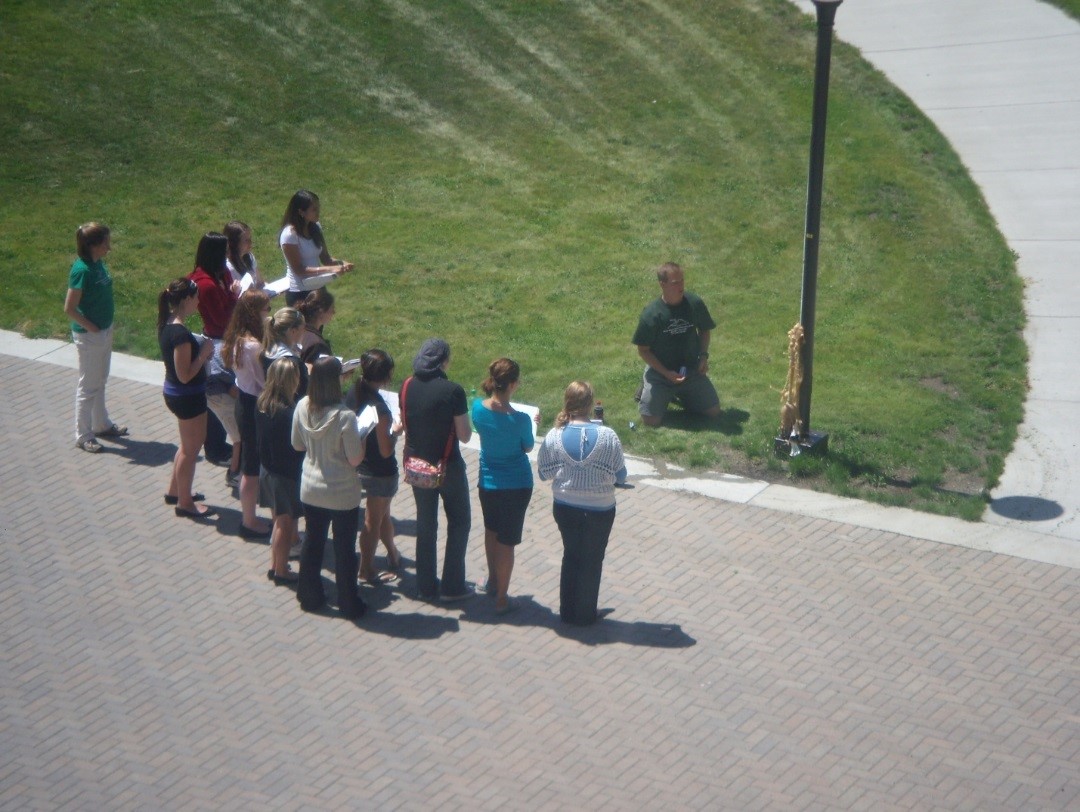

MKTG 473: Innovation
Unlike many New Product Marketing classes, this course is oriented around solving problems in innovative ways rather than the commercialization of new products. I begin the term with modules I have designed to build creativity. The first module, inspired by the work of IDEO’s Tim Brown (and my own user experience work at Microsoft), teaches students to use design thinking to put end users at the center of product design4. This flows into the “How to Think Like an Innovator” module, which is based on Dyer, Gregersen, and Christensen’s book, The Innovator’s DNA. The key point of this module is that anyone can learn to think like an innovator by practicing certain key behaviors, the most important of which is associating concepts that are not normally linked.
As a key activity in this module, I have students form small groups and conduct in-depth interviews of one another on their personal histories and interests. Then, the students are asked to create a new product or service that is based on the backgrounds of two or more group members. For example, one group paired an interest in Japanese food with an interest in camping to create a “bento box” for camping gear.

While the creativity modules establish an approach to creative problem solving, the mid-quarter Pitch & Pivot session greatly develops those skills. Over the first half of the term, students explore a problem they wish to solve and develop a high level solution (usually a product or service) to that problem. On Pitch & Pivot day, each team of students has just five minutes to pitch their idea to the rest of the class. The class then has five minutes to ask questions and provide feedback. Finally, all students vote on whether the group should continue with the project as is, or should pivot to a new solution based on the feedback. The shortness of the pitch is important in that it forces students to think critically about how the key benefits of their solution solve a problem.
"The shortness of the pitch is important in that it forces students to think critically about how the key benefits of their solution solve a problem."
The Q&A portion is even more important; it exposes students to new perspectives on projects that frequently result in dramatic improvements to the original ideas. For example, after the pitch and pivot, the camping bento box idea morphed into a mobile camping gear rental service targeted at outdoor music festival attendees.
While I believe every student benefits from the new strategic perspectives that Innovation provides, I am particularly proud of two start-ups based in part on plans developed in the course. The first, Perch and Play (perchandplay.com), provides a space in which children can engage in supervised play while their parents work. The second, RentHoop (renthoop.org), is an app-based service designed to match users with roommates using a Tinder-like interface.
MKTG 473: Marketing Strategy
Marketing is an increasingly data-driven field, but many students get interested in the discipline believing that they can succeed on their creativity. The reality is that the successful marketer will have creative and analytical skills in equal measure. If anything, the analytical skills are more important since creative strategies must be driven by market data in order to be successful.
"The reality is that the successful marketer will have creative and analytical skills in equal measure. If anything, the analytical skills are more important since creative strategies must be driven by market data in order to be successful."
I have engineered the marketing strategy course to enhance the analytical capabilities of our marketing graduates. This is founded on an analytical approach to decision making. In their projects and cases, students are required to articulate not only strategies but how those strategies will help the organization to reach their marketing goals and what metrics they will use to evaluate performance.
To this end, I have developed an innovative “visual segmentation” method for teaching Segmentation, Targeting and Positioning (STP) that is built around three tools. This method forces students to think critically about the reasons consumers initiate the purchase process and puts those reasons at the core of the STP effort. I developed the first tool, the segmentation tree, myself. I adapted the second tool, the targeting canvas, and the third tool, the 3-circles diagram6, from other sources.
Figure 2. Sample Segmentation Tree, Market for Online Dating

Figure 3. Sample Strategy Canvas
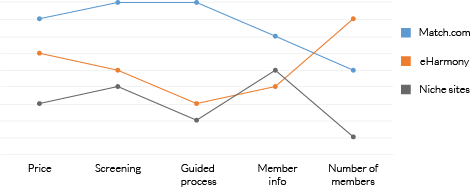
Figure 4. 3-Circles Layout & Sample 3-Circles Diagram

Tying it All Together
In order to think critically about a topic, it is necessary to approach that topic from multiple perspectives. Providing our students with this capability is one of the best things that we can do to prepare them for life beyond Western, regardless of their area of interest. Novel solutions to future challenges can only come from the application of novel perspectives.
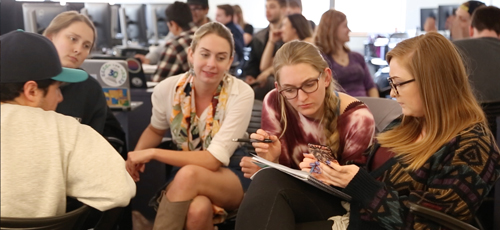
The range of disparate subfields is sometimes viewed as one of the great challenges of teaching marketing. While many faculty in my field choose to specialize in consumer psychology, quantitative analysis, or strategy, I see great benefit in spanning these boundaries. When my students can take, say, a pricing problem and develop a solution that simultaneously considers the reference points of the target customers, the desired brand position of the firm, and the contribution margin that optimizes profitability, I know that they are ready to make a contribution in a rapidly changing professional environment. A “correct” answer to that sort of problem can be derived from any of those perspectives, but the best answer is the one that considers them all.
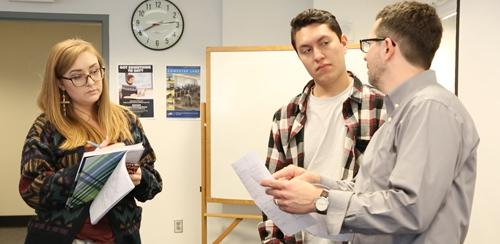
Finally, much more important than the answer to that type of question is the recognition that the most interesting and important real-world problems offer multiple points of entry. The most complete (and the most satisfying) solutions will be the ones that consider all of the approaches. Graduates who can do this consistently are ready to change the world. ∆
References
- 1. In my Summer 2016 Innovation class, I leveraged the Pokemon Go phenomenon to explain the diffusion of innovation, and a recent alum’s roommate-matching startup (RentHoop, mentioned below) to illustrate the importance of beachhead markets.
- 2. The survey can be found here.
-
- 3. For more details on this exercise, see Love, Edwin, and Pete Stelling. "Volcanic Experimentation: Using Mentos and Soda to Teach Causal Research in a Marketing Research Class." Marketing Education Review 22.1 (2012): 27-32.
-
- 4. An early version of this module is described in a 2011 teaching innovations article that I wrote with the two architects I recruited to help develop the content: Love, Edwin, Donn E. Stone, and Taine Wilton. "Teaching User-Centered Design in New Product Marketing." Marketing Education Review 21.1 (2011): 29-34.
-
- 5. The targeting canvas is based on the Kim and Mauborgne’s strategy canvas. See Kim, W. Chan, and Rene Mauborgne. Blue ocean strategy, expanded edition: How to create uncontested market space and make the competition irrelevant. Harvard business review Press, 2014.
-
- 6. See Urbany, Joel E. Grow by Focusing on What Matters: Competitive Strategy in 3-Circles. Business Expert Press, 2011.
